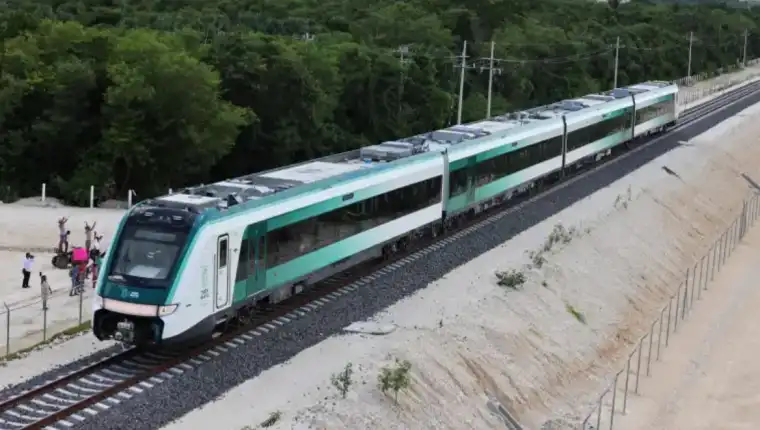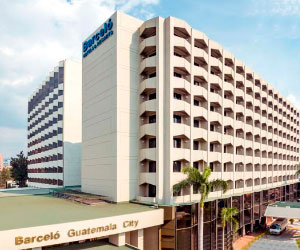Estimated reading time: 5 minutes
In the Yucatan Peninsula, the Mexican National Guard is laying down 1,000 miles of train tracks, integrating tourism into the very fabric of the landscape. This December, the resulting Maya Train will connect five Mexican states to tourist hotspots in the Riviera Maya, such as Cancún and Tulum. The project has gained international notoriety as hurried environmental and archaeological surveys have led to deforestation and the loss of ancient artifacts and ruins. While these are worthy concerns, they often overshadow a deeper threat hidden beneath the tracks.
The warm, clear waves of the Mexican Caribbean make the Yucatan a tourist paradise, but underneath Mexico’s top destination lies a second body of water supporting the Maya Riviera’s 21st-century tourism boom. The Great Mayan Aquifer is the world’s most extensive interconnected cave system and the source of drinking water for 5 million people in southeast Mexico. This forgotten pillar has been fundamental for high levels of tourism and the regional population boom that came with it.
The Great Mayan Aquifer’s unique conditions make it a resource capable of supporting a large population, but also make it vulnerable to outside contaminants. The system is made of limestone, an easily permeable material that allows water to accumulate in the caves beneath the jungle above. Limestone allows water to seep through the ground, but it also allows other contaminants left along train tracks and stations.
As North Americans flew into Cancún to vacation and Mexicans moved to take advantage of the resulting economic opportunities, the Great Mayan Aquifer began to support a larger population. Tourism is particularly water-intensive, with tourists requiring significantly more water than locals. Over the last 20 years, freshwater resources in the Yucatán peninsula have decreased 59 percent. Experts predict the region is 15 years away from experiencing a water crisis.
These predictions do not account for the Maya Train. The train could exacerbate water pollution issues in the Yucatan Peninsula, according to groups like Cenotes Urbanos. There is dangerously short distance between the tracks and the aquifer; in some cases, only centimeters of ground separate the two. While limestone created the aquifer, it is also an unstable foundation for the underground formation. The train has not yet begun operations, but there already have been instances of cenotes collapsing and groundwater being contaminated due to the project.
Experts predicted the Maya Train would cause cenote contamination and collapse. One particularly nightmarish scenario would be a train crash caused by a collapsing cenote. Archaeologists have discovered areas beneath the tracks where three feet of limestone will be expected to hold 200-ton trains. A potential crash would be even more devastating given that the leading cargo client of the Train Maya will be Petróleos Mexicanos, Mexico’s national oil company.
While the idea of a train crash might seem far-fetched, political observers have drawn parallels to the Mexico City Metro collapse in 2021. Poor construction practices, likely due to political pressure to complete the project during the term of Mexico City Mayor Marcelo Ebrard, doomed the train, resulting in 26 deaths. While engineers suggested the Maya Train would take 15 years to plan and construct, this year will mark the fifth since the project was announced, just in time to celebrate the final year of President Andres Manuel Lopez Obrador’s term. To speed up construction, President Lopez Obrador issued a national security decree to avoid permits and surveys and put the military in charge of construction, which removed legal obligations to release information publicly.
The Mayan Train is the latest example of how the Mexican government and tourism industry have privileged the interests of tourists over those of locals. As water supplies dwindle under the weight of tourism, locals will see changes in their day-to-day lives, as happened in Holbox this summer when authorities had to send potable water by trucks to the island off the Yucatan coast during a tourism spike. On the Pacific coast of Mexico, residents of Puerto Peñasco have taken to storing water in cisterns to prepare for the summer tourism boom.
One way to avoid a water crisis would be through desalination. While the costs of desalination are still high, it has become an increasingly popular solution to water crises, including in Israel, where 60 percent of drinking water comes from the sea. If prices are comparable to similar projects in the United States, one gallon of water would cost under one cent to produce. This is significantly higher than traditionally sourced water, so the burden of this cost must be placed on the tourism industry, which is better equipped to handle it than the local population.
Another concern about desalination is the environmental impact. Desalination plants produce excess salt, which is often released into the ocean, leading to significant adverse effects on aquatic environments, which are crucial to tourism in the Yucatan. While the costs are high, there are techniques for mitigating the environmental effects of salt waste, including diluting it with wastewater and repurposing it for commercial use. Once again, it will be important that the tourism industry shoulder the costs of protecting the environmental resources it relies on.
The tourism industry in the Yucatan will have to make sacrifices now if it wishes to avoid collapse, as happened in Mexico’s former top destination, Acapulco. As tourism brought wealth to Acapulco, criminal organizations crept in to sell drugs, leading to turf wars. Violence reduced tourism, which decreased profits and led criminal organizations to more violent methods of making money, further reducing tourism. Like Acapulco before, Cancún suffers from inequality and violence despite its flourishing tourism industry. Between January and August 2023, Cancún received over 400,000 international tourists, almost half the national total. In the first trimester of the same year, Quintana Roo received nearly 70 million USD of foreign direct investment in the tourism sector. However, experts suggest that investors take 80 percent of the money generated in the state. Despite the money brought to the region by tourism, more than eight percent of Cancún residents lack clean water, and over 35 percent live in poverty. In 2023, criminal organizations committed multiple murders in the Cancún Hotel Zone and left human heads outside a military building.
Projects like the Train Maya demonstrate that the Mexican government will support the tourism industry at the expense of locals. Still, the industry would be acting in its self-interest by making sacrifices to ensure the sustainability of the region long-term. While security and poverty make headlines, a water crisis will make each of these existing situations worse, threatening the viability of the tourism model as a whole. (https://theglobalamericans.org/2023/10/tourism-boom-water-bust-the-hidden-crisis-beneath-the-maya-train/)



































